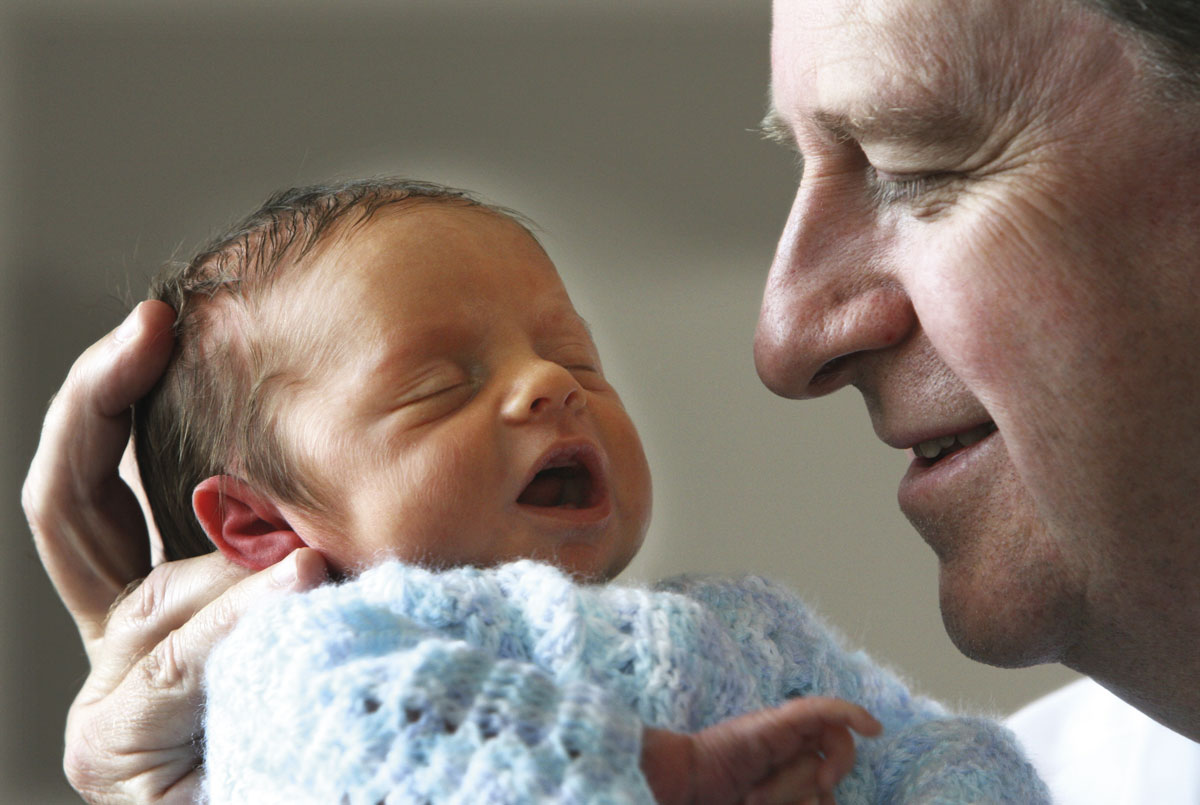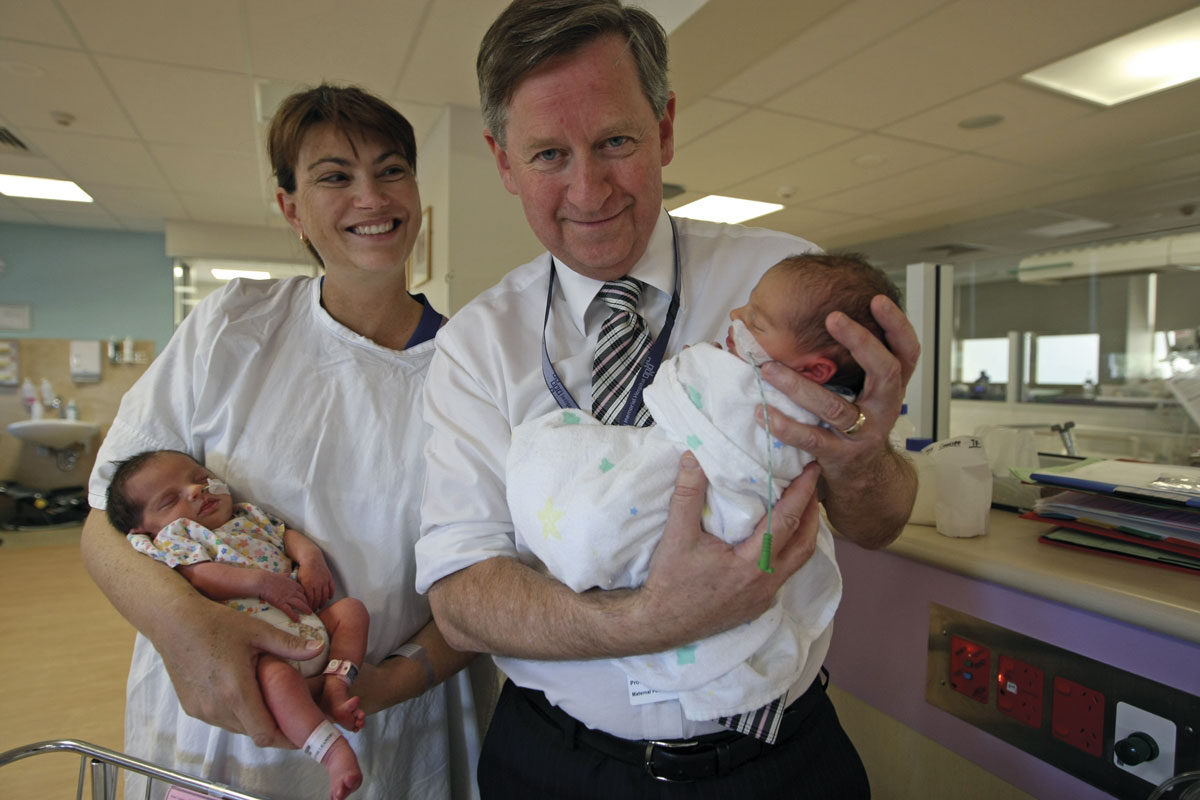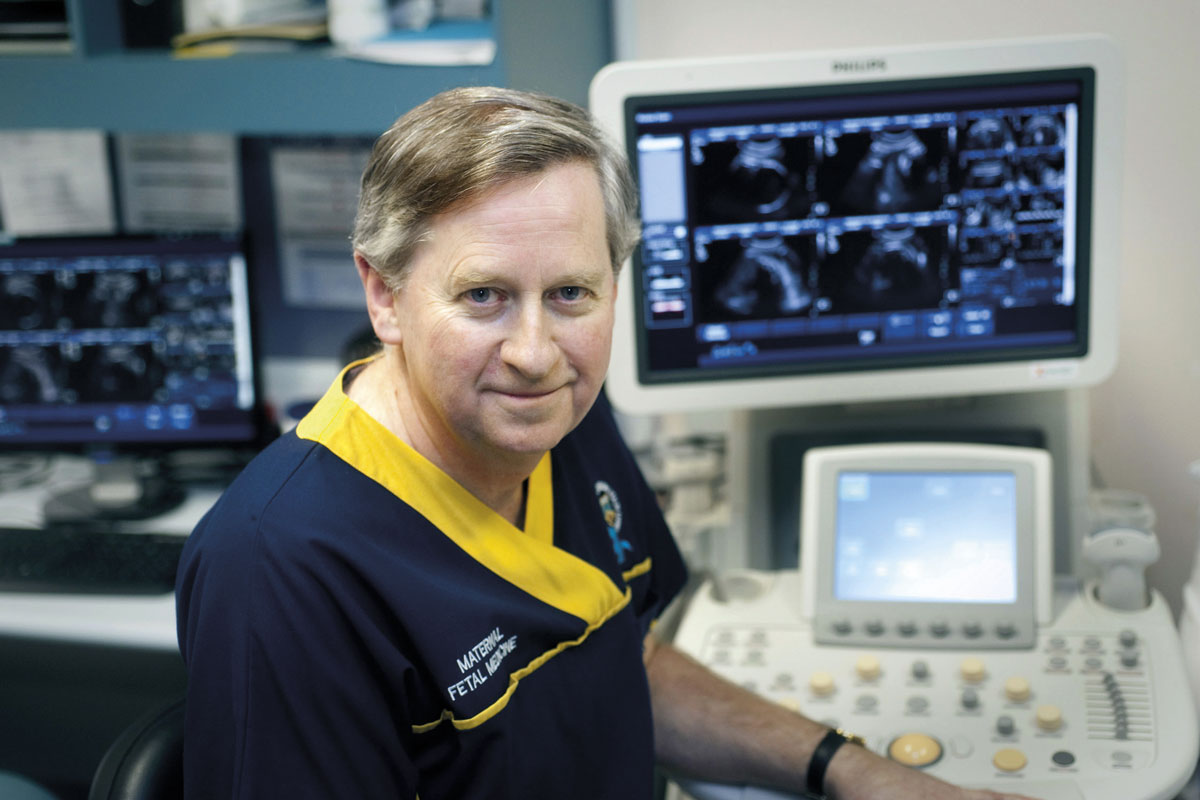 It takes nine months for a baby to develop and be born. It takes a lifetime to understand how and why. This has been Professor John Newnham’s life.
It takes nine months for a baby to develop and be born. It takes a lifetime to understand how and why. This has been Professor John Newnham’s life.
John Newnham, celebrated head of obstetrics and gynaecology at the University of WA and scientific director of the Women and Infants Research Foundation, considers himself something of an explorer. When he was a kid, it was the dream to find Lassiter’s Reef, but his eureka moment would be found deep inside a text book written in 1965 by gynaecologist Derek Llewellyn Jones.
It was reference to the fetus as ‘the passenger’ and the mother as ‘the power’ that had the young medical student thinking.
 “I remember saying to the tutor, ‘are you sure it’s just a passenger, and it isn’t doing something meaningful inside there?’. ‘Nah’ was his reply. ‘When its delivered, it heads to paediatrics, end of story’.”
“I remember saying to the tutor, ‘are you sure it’s just a passenger, and it isn’t doing something meaningful inside there?’. ‘Nah’ was his reply. ‘When its delivered, it heads to paediatrics, end of story’.”
“My plans to become a general surgeon in the Kimberley died at that moment because I realised here was my unexplored continent and I had to study obstetrics to find it.”
“In my early days in the labour ward, I loved the moment when there was just me, the mother and her baby. I would ask the mother if I could hold her baby and I’d look into the child’s face – each one was different. Some would be overdue and wrinkled and wizened, some were fat and bloated, some were skinny, some were small, some big. Every one of them had had their own unique experiences in the womb.”
“I looked into their eyes and asked them, ‘Where have you been?’ ‘What happened in there and what does this mean for the rest of your life?’.”
“The women thought I was a bit weird but then I’d talk to them and asked them what their journey had been like. They may have had some bleeding, high blood pressure, or their baby hadn’t grown so well, or may have grown too much, it may have arrived too early or too late. No one knew why, and more importantly no one else appeared to be interested.”
“I was hooked.”
Over the years, Professor John Newnham has refined his professional destination, culminating in a clinical and research landmark called The Whole Nine Months, which he’s reached with the aid of decades of hard work and a group of colleagues who are as committed as him to lower the preterm birth rate.
John’s search in the early days took him across the world. From some hair-raising experiences delivering babies in KwaZulu. Learning outcomes? “How to use my hands very quickly.”
Then to the UK and London’s St Bartholomew’s Hospital.
“I learnt to be a gentleman doctor at Bart’s [cue cheeky Antipodean giggle]. I worked for one of the Queen’s gynaecologists and overall London was a good maturing event for me but I wanted to get on the maternal fetal medicine train, known then as perinatology because they couldn’t think of another name, but it’s grammatically wrong.”
The explorer’s map pointed to the US where a fellowship and a flock of sheep awaited.
“I headed to California to work in two hospitals – the Cedar Sinai Medical Centre, very exclusive and very expensive, and the UCLA County Hospital which was frantically busy looking after everyone else, including many undocumented Hispanics.”
But research was high on John’s mind, which is where the sheep come into the story.
“There were wartime Nissen huts on the UCLA research campus and they were full of sheep. At the time, all eyes were on fetal surgery in a hope of correcting birth defects and UWA was funding me to research this.”
“I did my doctorate on fetal sheep, as did everyone in those days. We were sheep researchers but not many of my colleagues knew how to handle a sheep. In 1982 a pregnant ewe cost $1000 and they were trying to wrestle her to the ground – it took four of them.”
“I had the good fortune of being a roustabout when I was 14 on my paternal family’s sheep farm at Boyup Brook, so I knew my way around a shearing shed and a sheep. I also knew we could do this research better back home and for a fraction of the cost.”
“The UCLA research was working out well but it became evident to me that while sheep almost never miscarry after intra-uterine surgery, humans would, so our answers lay elsewhere.”
Ultrasound was the new eyes into this hidden maternal fetal world and the key to finding a solution to preterm birth – but first he had to enlist the help of a retired shearer.
Getting to know ewe
“When I returned to Perth, I wanted to see if I could ultrasound a sheep and found a pregnant ewe at the Agricultural Department’s research station at Medina. There were plenty of naysayers because it was incredibly hard to get a clear view of the uterus of a sheep, but I was determined to give it a try. So, I loaded the ultrasound machine into the back of my Datsun coupe and drove down to Medina.”
“The ag department introduced me to an ex-shearer, Neville Mahony. They thought I might need his help! He said, ‘well, doc, you stand down there at the end of a ramp (which was 1.1m high) and I’ll get the sheep’. Neville turned the sheep around as if he was about to start shearing and he said, there you go doc, go through the bare patch. I probed in the bare patch and lifted it as Neville said I should and I could see everything. That opened up an entire new field of research.”
His dream of discovering how to lower the rate of preterm births in his beloved home state inched closer.
But there was a missing link – after 30 years and nearly 400 publications worth of preterm birth prevention studies, so many were negative.
“But I kept looking. I wondered if I needed to package this project bigger and better. I was at a lunch at the university sitting next to a woman who was senior adviser to the Minister for Health. I told her about my idea of a WA preterm prevention package. She looked at me and said, ‘well I hope you have more than tobacco and folate’. She rolled her eyes and talked to the person next to her.”
“That was a defining moment because I realised that I couldn’t launch this thing unless I had pretty good evidence it would work. In 2013, while sitting at a conference in the US, I listened to the release of data by a person I respect enormously. He had the results of a big US trial that gave progesterone tablets vaginally to women with short cervixes mid-pregnancy to lower preterm birth.”
“Extraordinarily, they couldn’t introduce it across their population because they couldn’t ultrasound everybody at 19 weeks pregnancy. They made the discovery but they couldn’t implement it. At that moment I realised we had the package.”
“I came back to Perth and sat at that desk and wrote the plan. Seven interventions to introduce the measurements of the cervix at all mid-pregnancy scans in WA. That was a key component. Establishing a system where women with short cervixes would get progesterone that night – THAT night, not the next day, but that night.”
“It would take expertise, because transvaginal ultrasound is required and extra training is necessary, but it was doable. That was two of the seven interventions, but they were the key ones because they would take the most work.”
“I went to then Minister of Health Kim Hames and Director General of Health Bryant Stokes calling for a clinic for these complicated cases and, they in turn, demanded a business plan. So, I came back to the hospital, sat down with the chief accountant and wrote a plan.”
“We could fund such a service by preventing two early preterm births a year. In the first year we prevented 47 early preterm births.”
The rush was on to take this program to the rest of the state, and that outreach was funded by Malcolm and Tonya McCusker who on the basis of a 15-second conversation said, the cheque’s in the mail.
“They trusted us,” John said. “I did a whole lap of WA with Michelle Pedretti, KEMH’s chief sonographer, a junior obstetrician called Suzanne Meharry, and one of our midwives. We are now in the middle of another statewide outreach tour.”
The challenge now is to maintain the progress against a rising preterm birth rate, which John believes is due partly to doctors delivering babies from low-risk pregnancies too soon.
“Babies are not mature until 39 weeks. We have been misled by our predecessors into thinking that term is 37 weeks. It certainly is not. The re-education has been effective in this hospital. We have lowered the singleton preterm birth rate by 20% and have kept it down, but we are losing the battle elsewhere.”
“We have shown we can lower this rate. We are the first geographical region in the world to lower preterm birth down to the early gestational ages but it’s not a once-off program. It’s continuous and we have to expand it.”
So, what does a mere two weeks matter for the baby (and its family) – it has 10 fingers and 10 toes and lungs that function?
Recent research led by WIRF’s Dr Scott White has the potential to answer that question with explosive impact.
John explains:
The art of waiting
“You’re an obstetrician sitting with a woman at 37 weeks of a low-risk pregnancy contemplating delivering her today or in two weeks’ time. Why do you want to deliver her today? A yes means you have a small chance to prevent a stillbirth. What do you gain by waiting?”
“This research shows the development of the baby’s brain in that two weeks can have enormous impact on the future life of that child. If we look at a school of 500 kids who had all been electively delivered at 37 weeks, what do we see?”
“Well, we would have saved one stillbirth, but in each class of 30 there will be two children with an externalising behavioural disorder. Across every two classes there will be one child with need for special educational assistance and across every three classes there will be two children with a basic numeracy problem.”
“This research may hold the key, at least in part, why our schools are overburden with behavioural problems and I don’t understand why people aren’t banging on my door saying you’ve got to do something about this.”
“I was asked to speak at a fun initiative called a Pint of Science at a Northbridge pub recently. With pint in hand, I asked the audience of about 30, who are you all? Most of them turned out to be teachers. So I started talking about this research. I asked them did they know the age at birth and the birthweight of anyone in their classes because we need to know these things.”
“Of course, there are many potential medical and pregnancy complications where an early birth by induction of labour or Caesarean section is necessary and may save lives, no one is disputing that. But for all other times, it’s vital to go the whole nine months.”
John’s work and the work of the team has sent ripples through the establishment but none more satisfying for John, who is a cautious about praise, singles out a report in the prestigious American Journal of Obstetrics and Gynaecology as a moment of pride.
“Some things in my life have meant a lot to me. When I was in US, people didn’t know the difference between Sydney and Australia and wondered that I could speak English. I have always wished to show how WA can show the world.”
“After that first year of the preterm prevention, the American Journal of Obstetrics and Gynaecology made it a report of major impact. They thought the initiative was of global importance and it came from a place few had heard of – WA. That was important to me.”
Seven interventions to prevent preterm birth
- No pregnancy to be ended until about 39 weeks gestation unless there is obstetric or medical justification
- Measurement of the length of the cervix at all mid-pregnancy scans.
- Natural vaginal progesterone 200mg each evening if cervix <25mm (TV)
- If cervix <10mm, consider cerclage or progesterone
- Vaginal progesterone if prior history of spontaneous preterm birth (or PPROM)
- Women who smoke should be identified and offered quitline support
- The KEMH Preterm Birth Prevention Clinic



